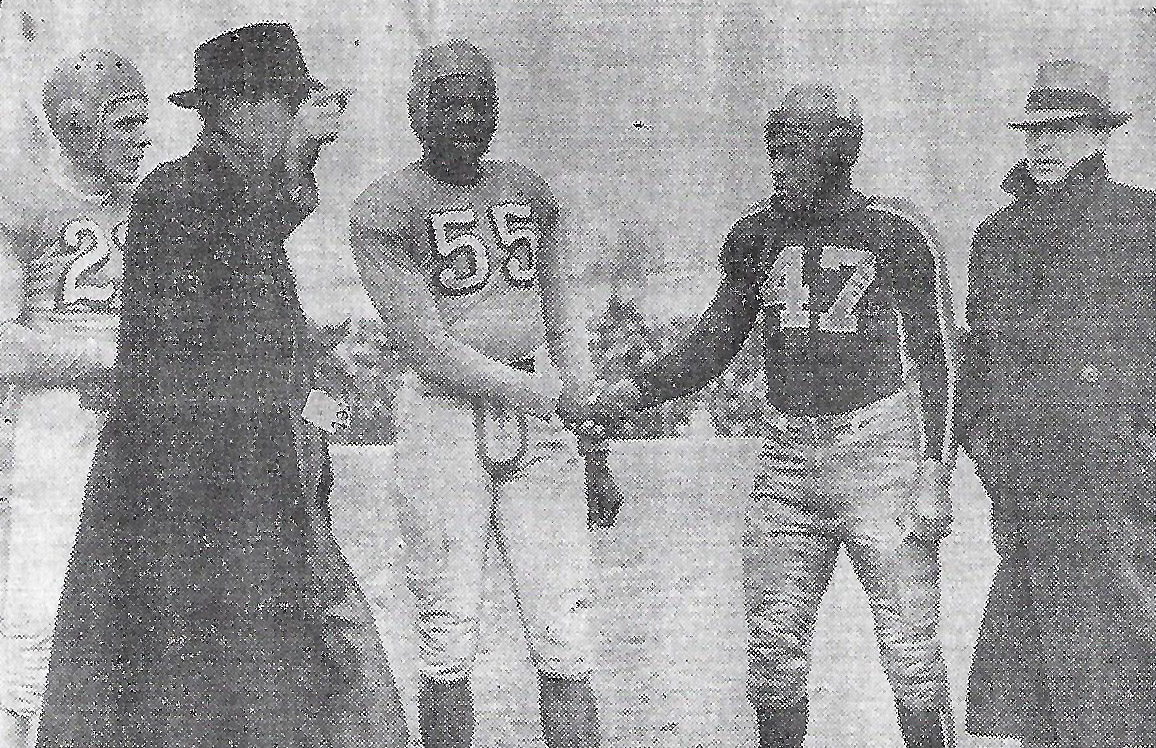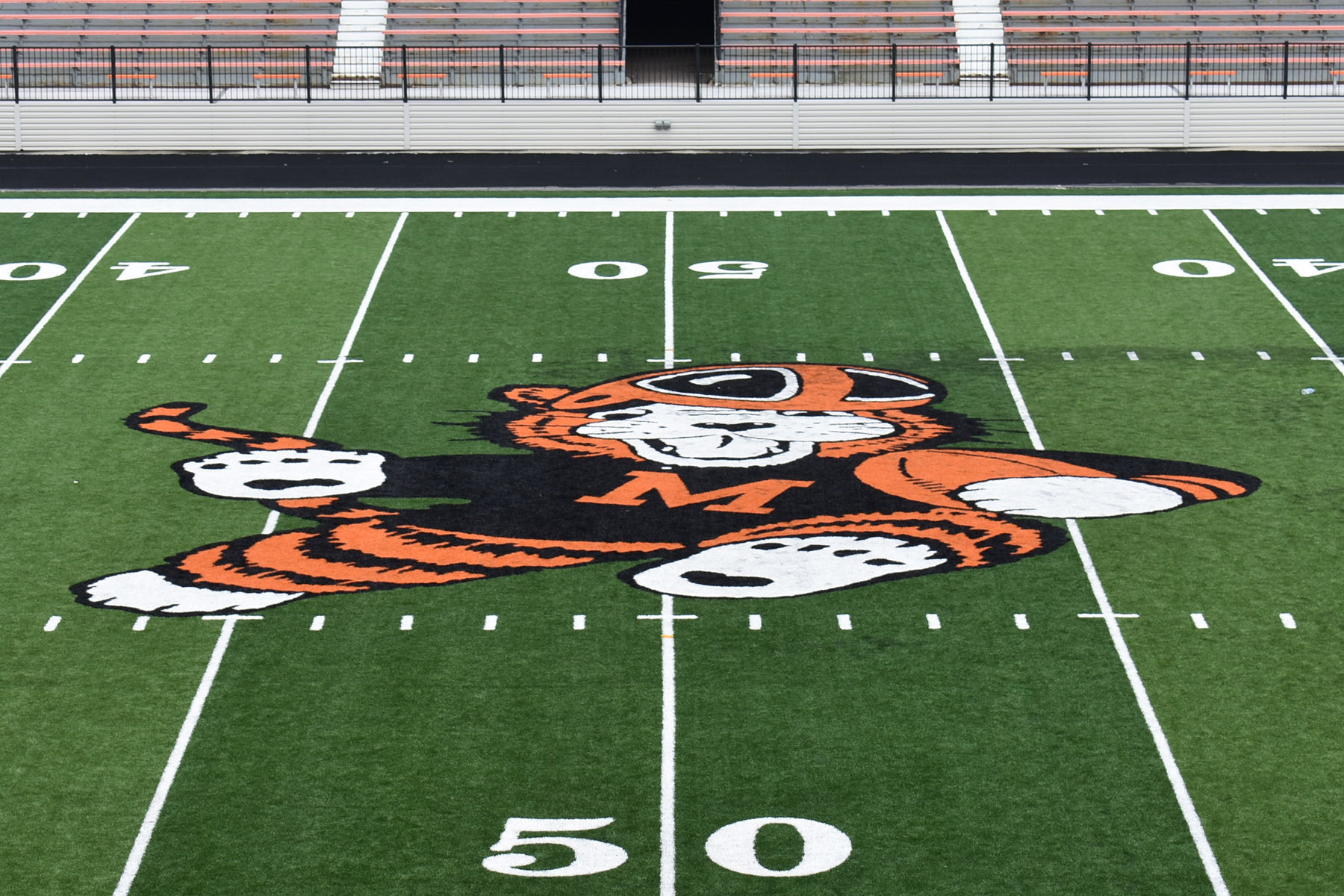
The Changing Landscape of Massillon Football – Part 6: Stadiums
Bailey Yoder (MassMu), Gary Vogt and Bill Porrini contributed to this story.
This is the sixth of a 7-part series, which includes the following installments:
- Part 1: Offensive Formations
- Part 2: Defensive Formations
- Part 3: Passing Frequency
- Part 4: Scheduling
- Part 5: Roster Size
- Part 6: Stadiums
- Part 7: Game Attendance
Introduction
Part 6 of the series presents a look back at all of the football stadiums that the Massillon Tigers have called home over their 130+ year history. Six different venues were used, some more than once, before settling on Paul Brown Tiger Stadium.
1891 (Unknown field)
Massillon’s first school building was opened in 1848. Called The Union School, it housed all of the educational grades, from primary through high school. In 1854 the primary students were relocated to a new facility. But by 1879, The Union School was no longer suitable to handle the growing enrollment and it was replaced by North Street School. Located at North Street and 5th St. NE, the property was later and for many years the site of Longfellow Junior High. More recently, it was sold to the Salvation Army and they have their main office there.
North Street School was also home to the first Massillon high school football team, which was fielded in 1891. Although there is no record of the squad having played its two home games there that year, it is certainly in the realm of possibility, since games were documented as having been held there several years later. The other potential site is Russell Park.
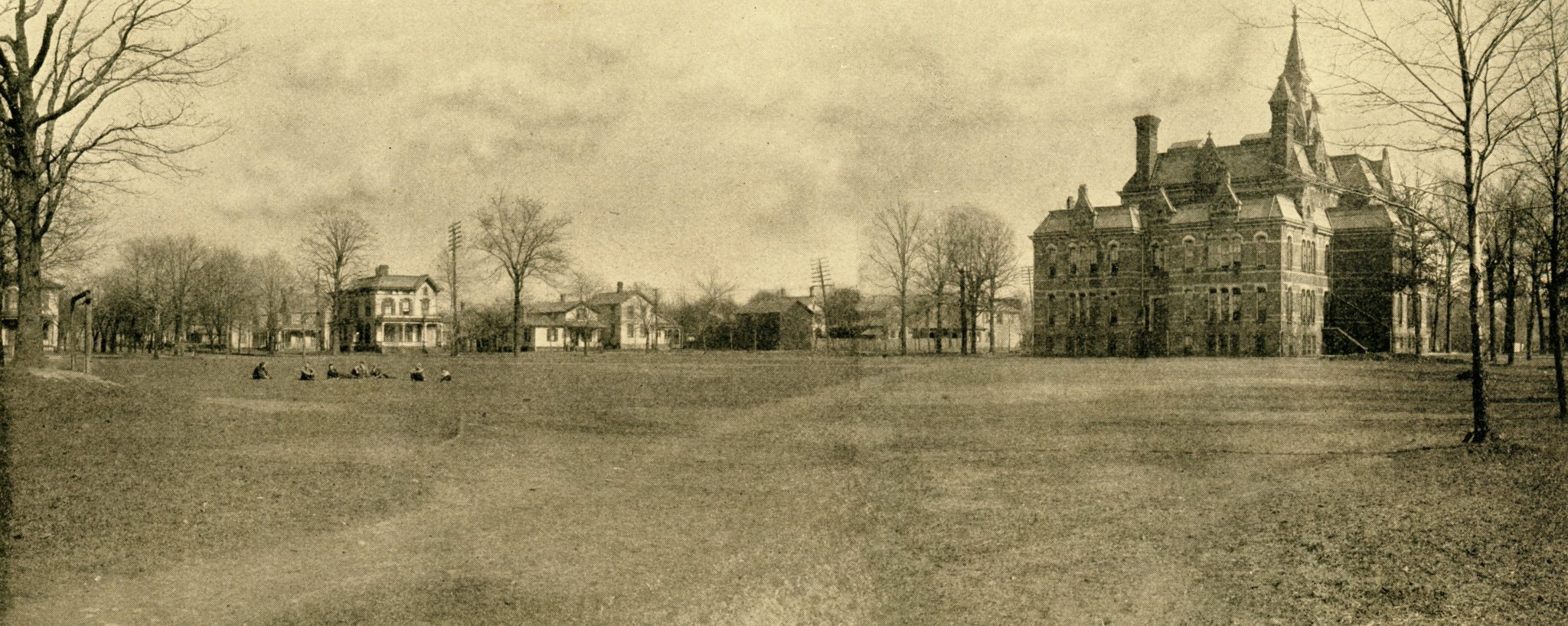
North Street School and Football Field (1903, 1907-14)
1893-94 (Russell Park)
Older Massillon fans remember that the land on which the Meadows Plaza currently sits, home to both Target and Giant Eagle, was previously the site of a golf driving range. And it was often referred to at various times Driving Park. But in 1893 it was Russell Park. Game stories from 1893 and 1894 show that the Tigers played several home games there.
Russell Park is historical in that Massillon played its first ever game against Canton, in 1894. Unfortunately, the local team lost, 12-8. Here’s an interesting quote from the game story: “Class spirit and inter-urban rivalry ran high and fierce at Russell Park on Saturday afternoon. The Massillon high school football eleven had undertaken a large and difficult contract and were abetted by numerous charming young women, whose umbrellas, hats and coats were decorated with yellow and black and who did not hesitate to indulge in a very fetching yell when matters progressed their way.” Note that Massillon’s original colors were yellow and black.
Game stories from 1895, 1896 and 1899 (no games were recorded for 1897 and 1898) do not identify the home field. But it is believed that these games were also at Russell Park. By 1899 Massillon was able to assemble its first significant schedule, which listed seven different games, six of which were at home.
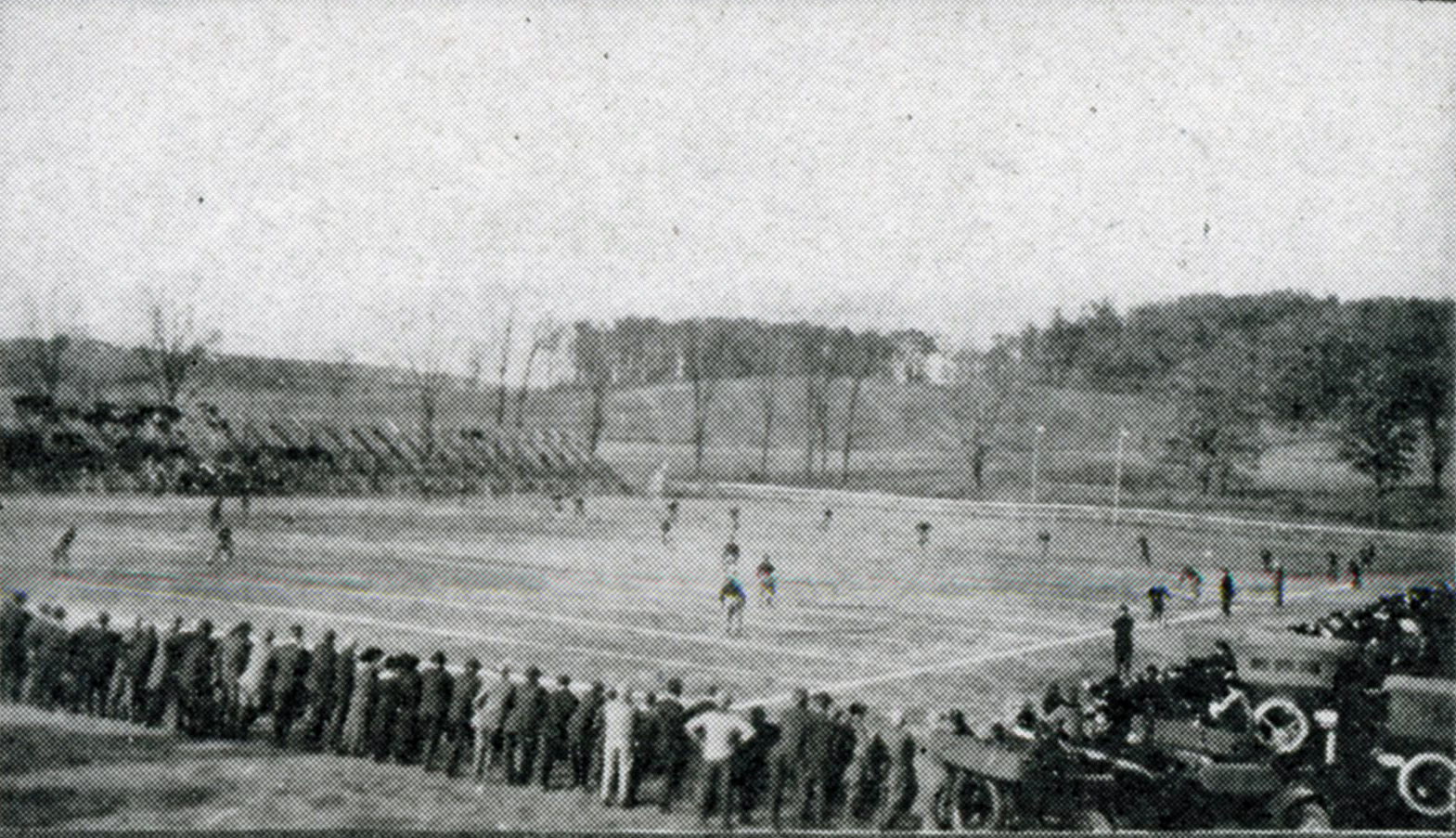
Russell Park (1893-94)
1900 (Sante Fe Park)
Sante Fe Park was primarily a baseball field and was accessible from a trolley that ran the length of Lincoln Way. Fans simply needed get off at 16th St. NE and walk up the hill to the field. The grounds were also large enough to hold football games and the high school team relocated there in 1900. Today, the Park is a residential neighborhood.
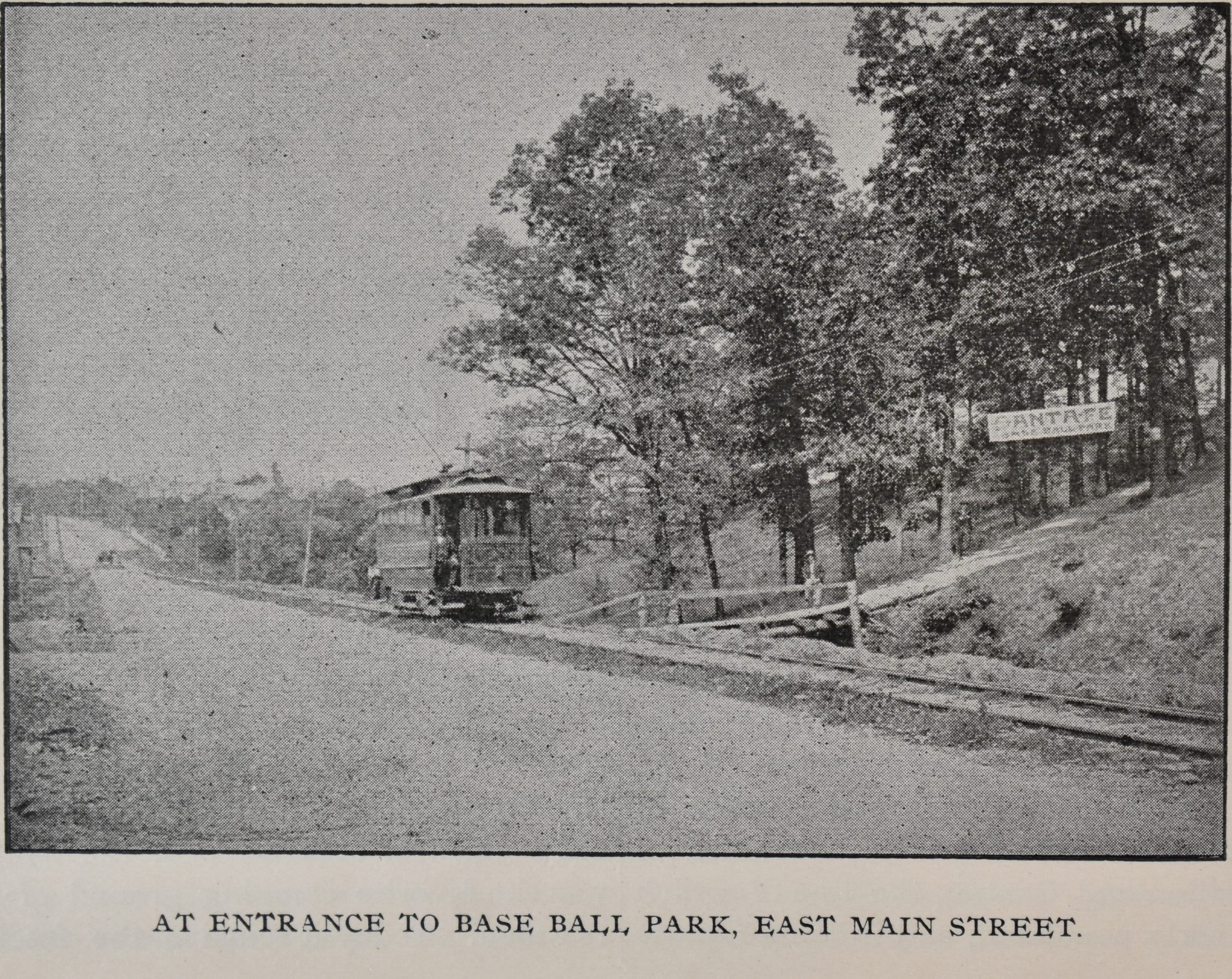
Trolley on Lincoln Way with a sign pointing to Sante Fe Park (1900, 1904-06)
1903 (North Street School / Sante Fe Park)
There were no games recorded for 1901-02 and in 1903 the team played at North Street School.
1904-06 (Sante Fe Park)
After one year at North Street, the team went back to Sante Fe Park for the next three.
1907-14 (North Street Field)
In 1907 the Massillon team returned to North Street Field and remained there through a portion of the 1914 season. The best run during that stretch was in 1909 when Coach Hap Fugate led his squad to a 9-0-1 record and captured Massillon’s first state championship. During the season they won a pair of games against Canton by scores of 6-2 at home in front of 1,500 fans and 11-6 on the road.
1914-16 (Driving Park)
Midway through the 1914 season, the team left North Street Field and finished the home slate at Driving Park (previously named Russell Park). They remained there for the next two years. John Snavely was the head coach for all three seasons and he enjoyed great success at that time, fashioning a combined 24-3 record. In fact, his 1916 team was 10-0 and was named state champion, Massillon’s second crown.
1917-19 (Massillon Blues Athletic Company)
Yet another move came in 1917 when the Tigers relocated to the Blues Field, where the semi-professional Blues played football for a time. Later it was known as Central Steel Field. But locals today always recall it as The Agathon, which over many years hosted the Agathon baseball team and later a multitude of recreational softball games and tournaments. Today the site is occupied by the Massillon Recreation Facility.
The Massillon football team played there for three years. John Snavely was again the coach and his record was 17-5-2, with a 10-2-1 mark at home. One of those home games was a 7-6 victory over Canton Central, a school that would be renamed Canton McKinley the following year, in 1918.
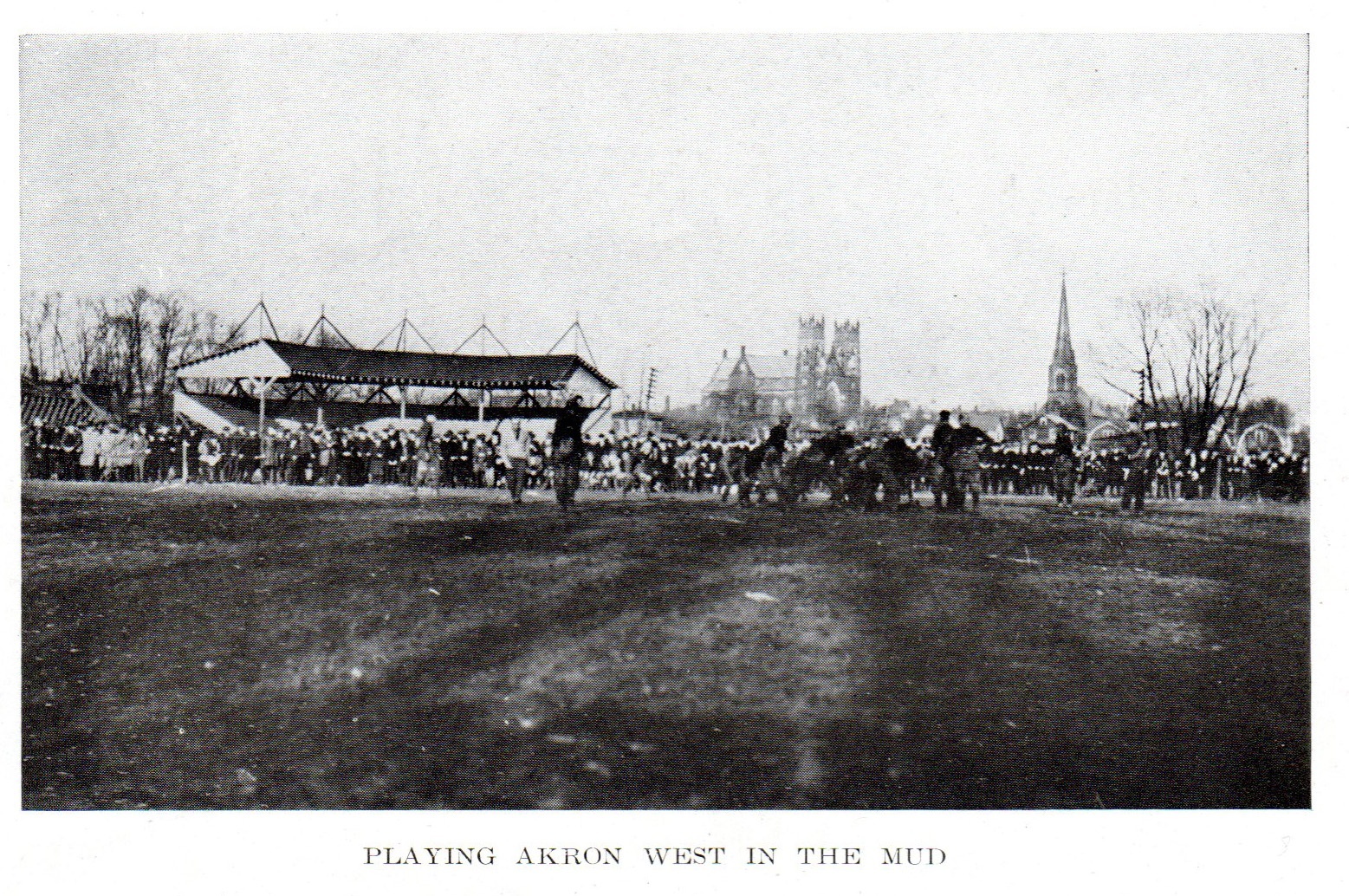
Massillon Blues Athletic Company (1917-19)
1920-24 (Pearl Street)
Pearl Street was the location of Jones Junior High. But adjacent to it was Jones Field that the Tigers used for five years. Elmer Snyder was the head coach for one season and then Dave Stewart took over, fashioning a 31-7 record, including an undefeated state championship team in 1922. In addition, his record against the Bulldogs was 4-0.
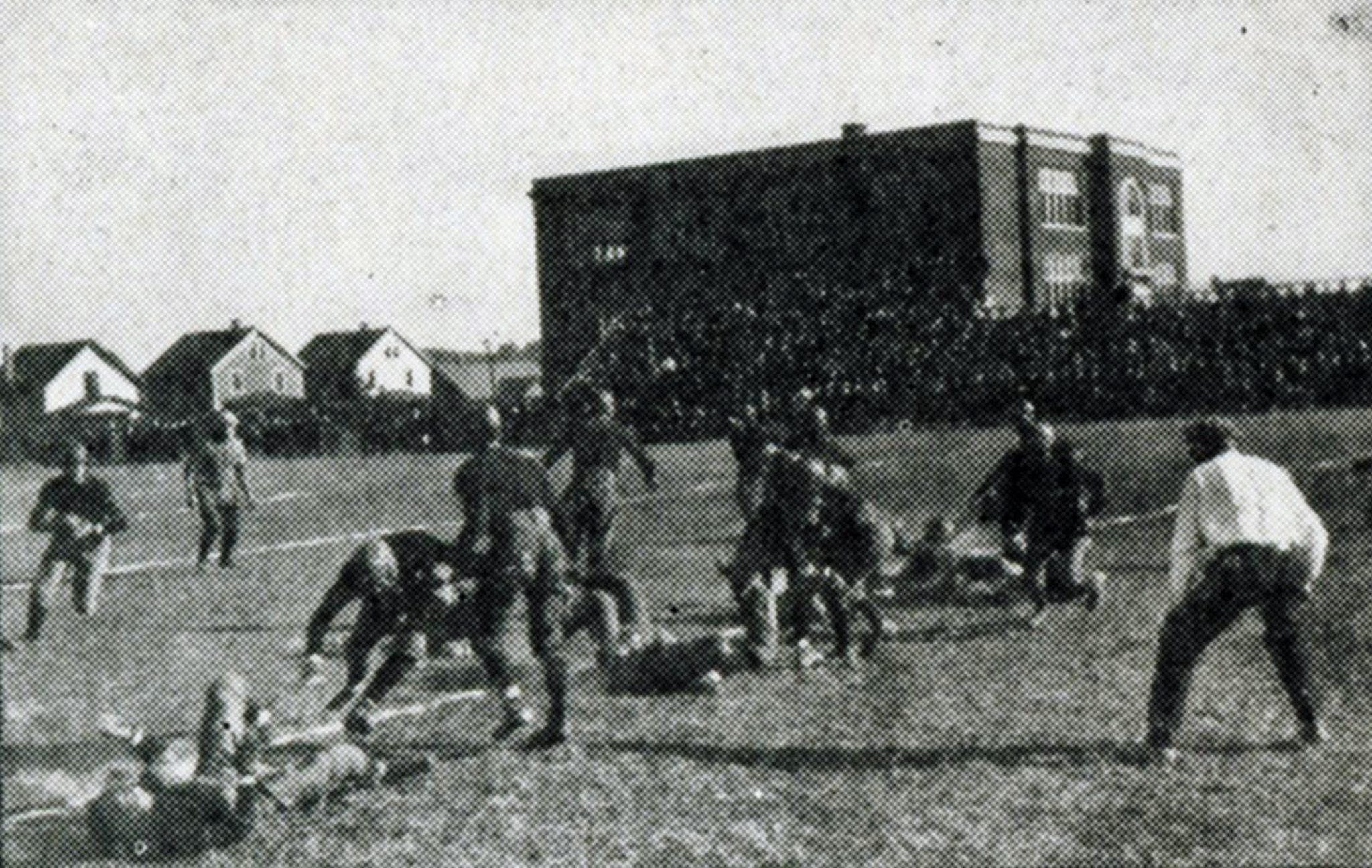
Jones Field on Pearl Street, with Jones Junior High in the background (1920-24)
1924-38 (Massillon Field)
In 1924 Massillon completed construction of its first real stadium, just in time for the annual game against McKinley. The facility was located at what is currently called Shriver Park, at Shriver and 3rd St. SE, in the southeast part of town and just blocks from Pearl Street. It was considered at the time as the finest high school stadium in the state, with field lights for night games and a seating capacity of 6,500.
The big game that year drew 8,000 fans, which was the largest crowd for the rivalry game to date. The event also involved an elaborate dedication, led by Superintendent H. R. Gorrell, who spoke through a doubled-barreled megaphone. The guest speaker was Congressman John McSweeney of Wooster. Following an invocation by Rev. F. B. Hax of St. Paul’s Lutheran Church and a speech by WHS senior Louise Hunter, the field was officially christened likening to a newly launched ship when Miss Hunter broke a bottle filled with water against the south goal post. The ceremony concluded with a rousing display of fireworks.
The game itself was played in a quagmire of a field owing to a rain deluge the previous day. Nevertheless, Massillon’s Elwood Kammer found some footing in the first quarter and returned a pass interception 65 yards for a touchdown. So, at the half, the Tigers led 6-0.
At the break, the students of the two schools sang their respective alma maters and then the two bands joined to entertain the crowd. Halftime wrapped up with the Massillon American Legion Post 221 presenting an American flag to the school for use at the facility. The flag was accepted by E.P. McConnaughey and then the combined bands performed the National Anthem as the flag was raised.
With the field conditions being nearly unplayable, there was no scoring the second half and the 6-0 lead held up for the Massillon victory. It was Head Coach Dave Stewart’s fourth win over the Bulldogs in four tries. The captain of the Massillon team was future Wall of Champions inductee Bill Edwards. Noteworthy was that Paul Brown was a junior on the squad. Fifteen years later Brown, now as coach of the Tigers and having won four state titles on Massillon Field from 1935-38, abandoned the facility in favor of a newer and larger stadium.
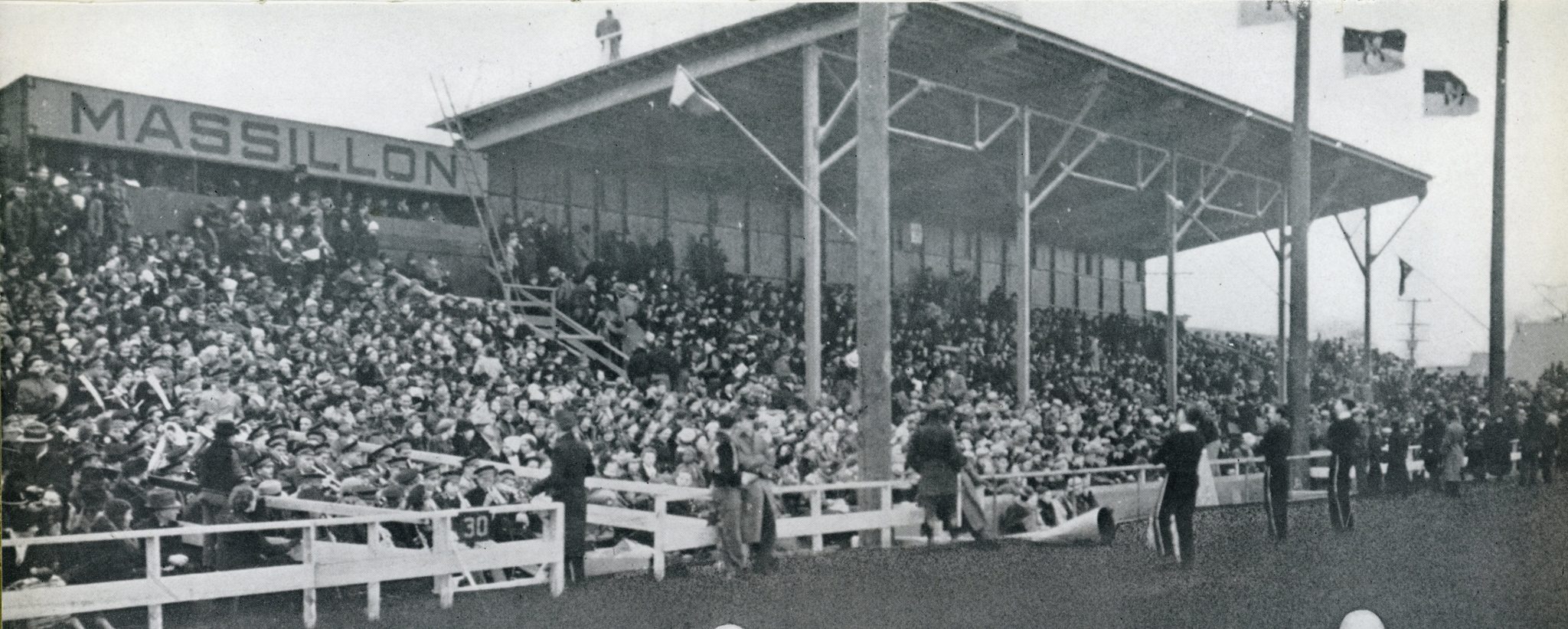
Massillon Field (1924-38)
1939-present (Paul Brown Tiger Stadium)
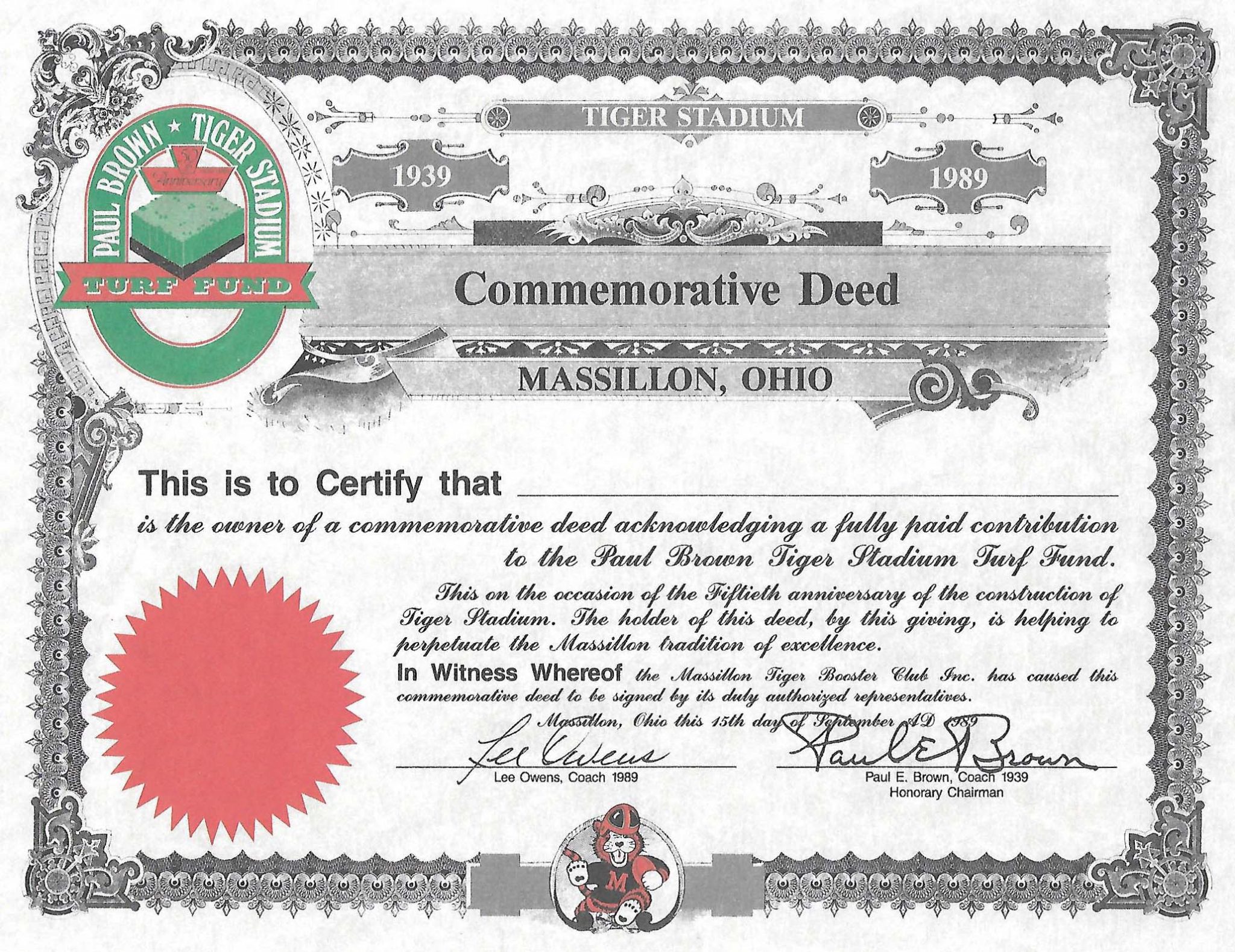 In 1938, construction of the present football facility got underway. It came about as a result of the demand for tickets on account of the success that Paul Brown achieved as he developed his storied program. The stadium was partially funded by the federal government’s Works Project Administration (WPA), which was designed to create meaningful jobs during the depression era of the 1930s at a total cost of $246,000. Originally named “Tiger Stadium,” it was renamed in 1976 as “Paul Brown Tiger Stadium” in honor of Brown, who later coached Ohio State and the professional Cleveland Browns and Cincinnati Bengals.
In 1938, construction of the present football facility got underway. It came about as a result of the demand for tickets on account of the success that Paul Brown achieved as he developed his storied program. The stadium was partially funded by the federal government’s Works Project Administration (WPA), which was designed to create meaningful jobs during the depression era of the 1930s at a total cost of $246,000. Originally named “Tiger Stadium,” it was renamed in 1976 as “Paul Brown Tiger Stadium” in honor of Brown, who later coached Ohio State and the professional Cleveland Browns and Cincinnati Bengals.
Whereas Massillon Field was not deemed adequate enough for expansion, a new stadium was commissioned on a 5-acre track located within South Sippo Park, which was owned by the City of Massillon. Employing a land swap, the school took possession of the stadium plot and the City took over the Massillon Field land, which is today called “Shriver Park.”
During construction, the home stands of Massillon Field were dismantled and relocated to the visitors’ side of the new stadium. The roof was also taken down and installed on the home side to shelter a portion of those stands. When completed, the stadium seated 12,000 patrons, 7,650 on the home side (40 rows) and 4,250 on the visitors’ side.
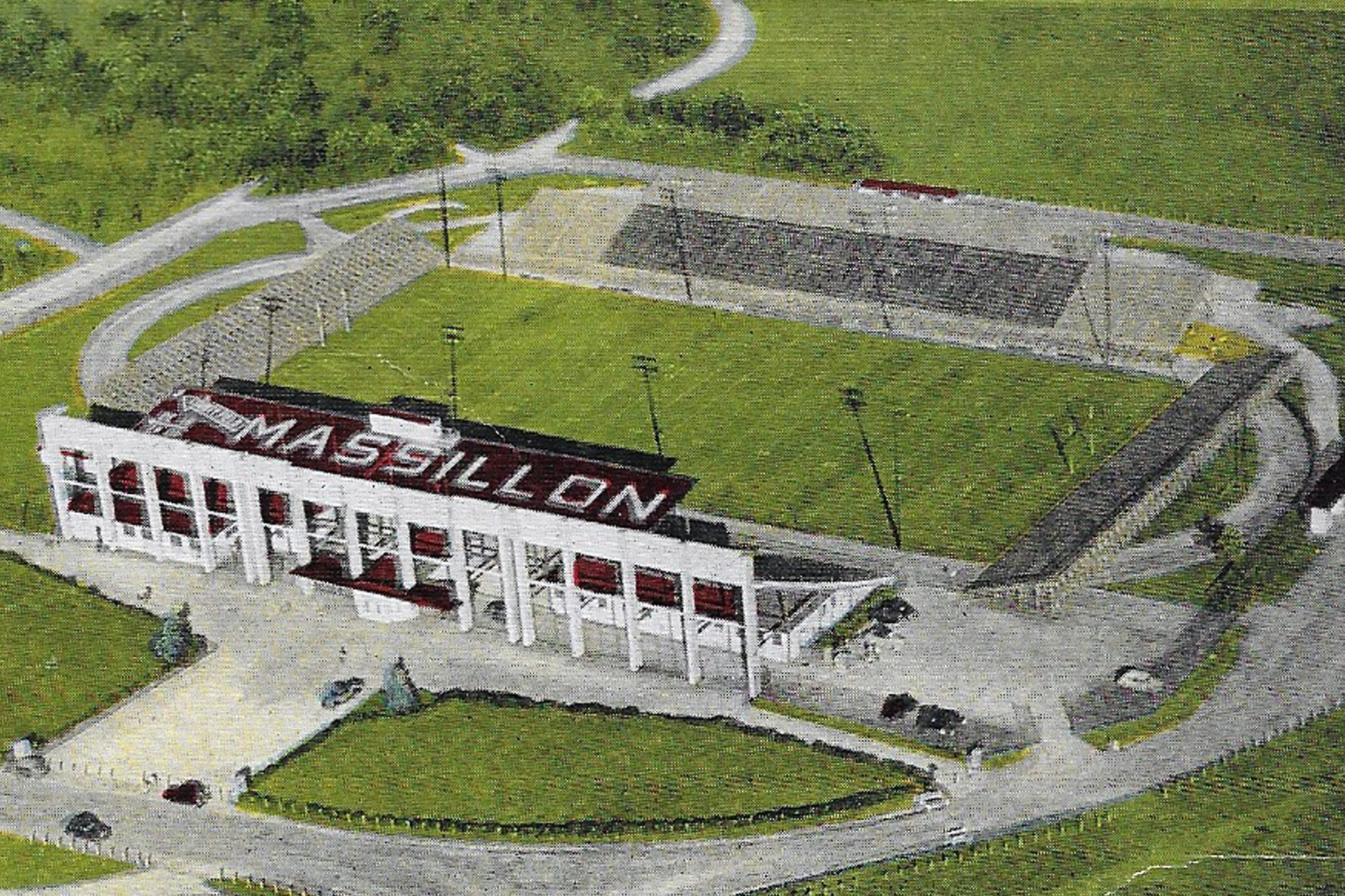
Tiger Stadium; darkened stands were relocated from Massillon Field
The stadium was dedicated in 1939 and the Massillon players initiated it with a 40-13 shellacking of Cleveland Cathedral Latin, breaking their 17-game winning streak. Halfback Tommy James scored the first two touchdowns in the new facility on runs of 39 yards and 31 yards. With the score sitting at 33-0 midway through the third quarter, Brown removed his starters for the rest of the night.
Since that time there have been several major upgrades, including the following:
- Additional seating added to increase the capacity to 22,500
- Construction of permanent end zone seating and elimination of track seats, which reduced the capacity to 16,884
- 1955, 1989 – Installation of new lights (relocated behind the stands in 1989)
- 1967, 1982, 2005 – Replacements of scoreboards, the last one being massive and all digital
- 1989 – Installation of Omni-Sand Turf (first artificial playing surface)
- 1989, 2023 – Upgrades of the sound system
- 1990 – Construction of the east side press box (loge box, meeting rooms and rest room facilities)
- 2019 – Third replacement of artificial playing surface
- 2020 – Rebuild of the structural support steel on the home side and replacement of fiberglass seat benches on both sides
The stadium has held up fairly well during its 84 years of use, although preservation efforts for the national historical site are always underway. Through the 2023 season, the home record stands at 526-90-6 (.850). In addition, 18 different state champions have made their mark on the field, including the 2023 Massillon Tigers. In addition, the facility over the years has been host to many OHSAA state championship games, Ohio North-South All-Star Games, band reviews and July 4th fireworks displays.
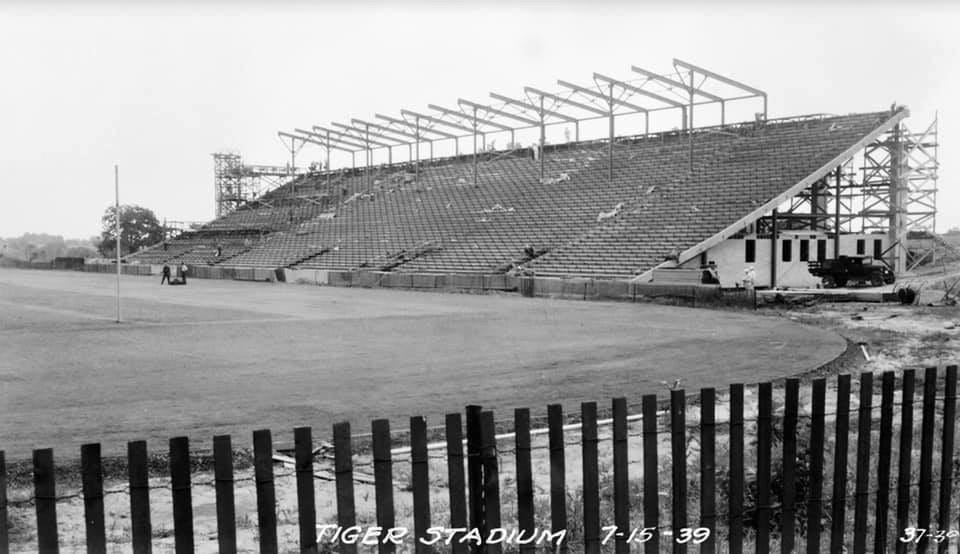
Tiger Stadium under construction
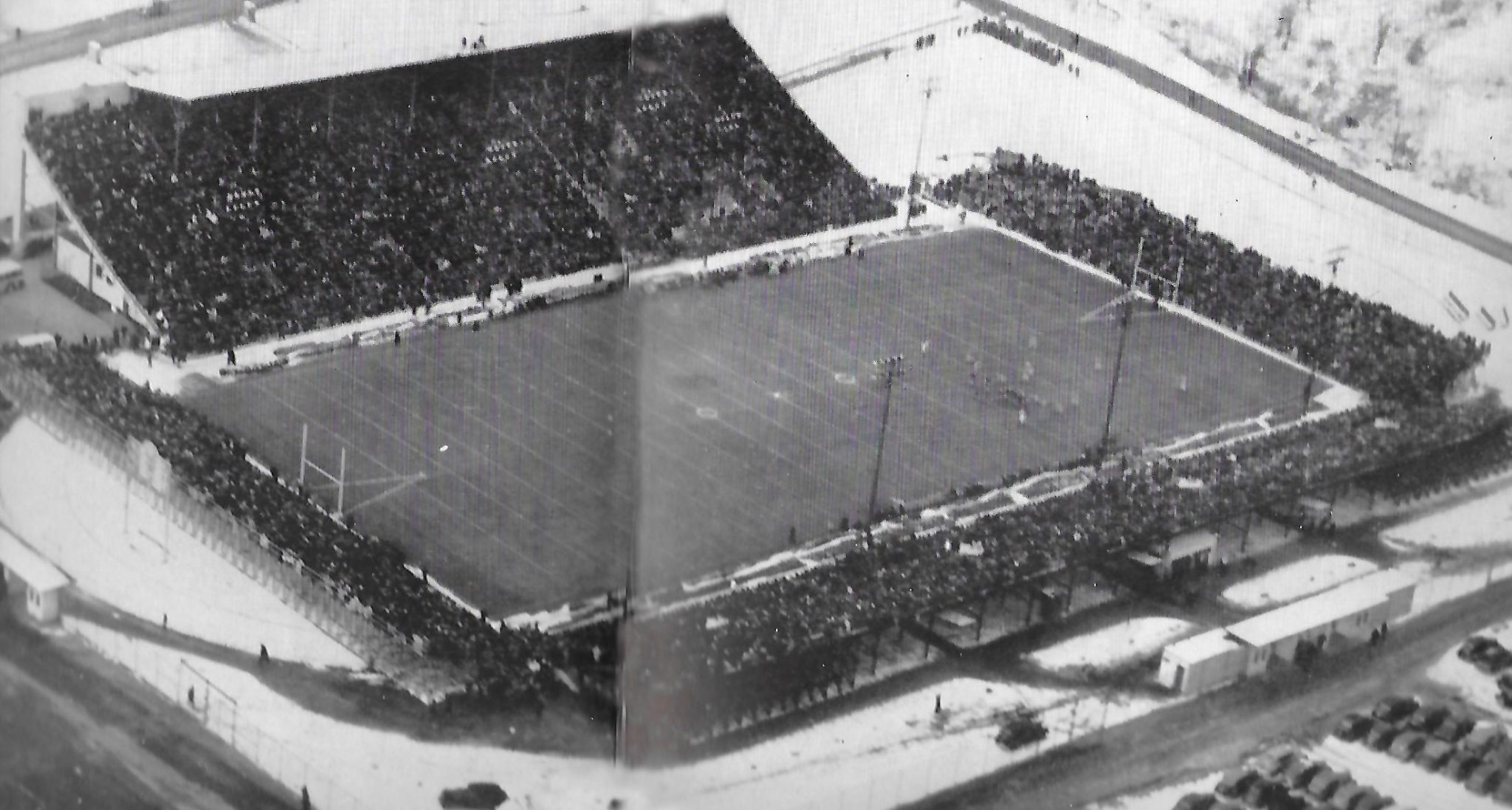
Tiger Stadium, 1940 game against Canton McKinley with extra seating added in the end zones
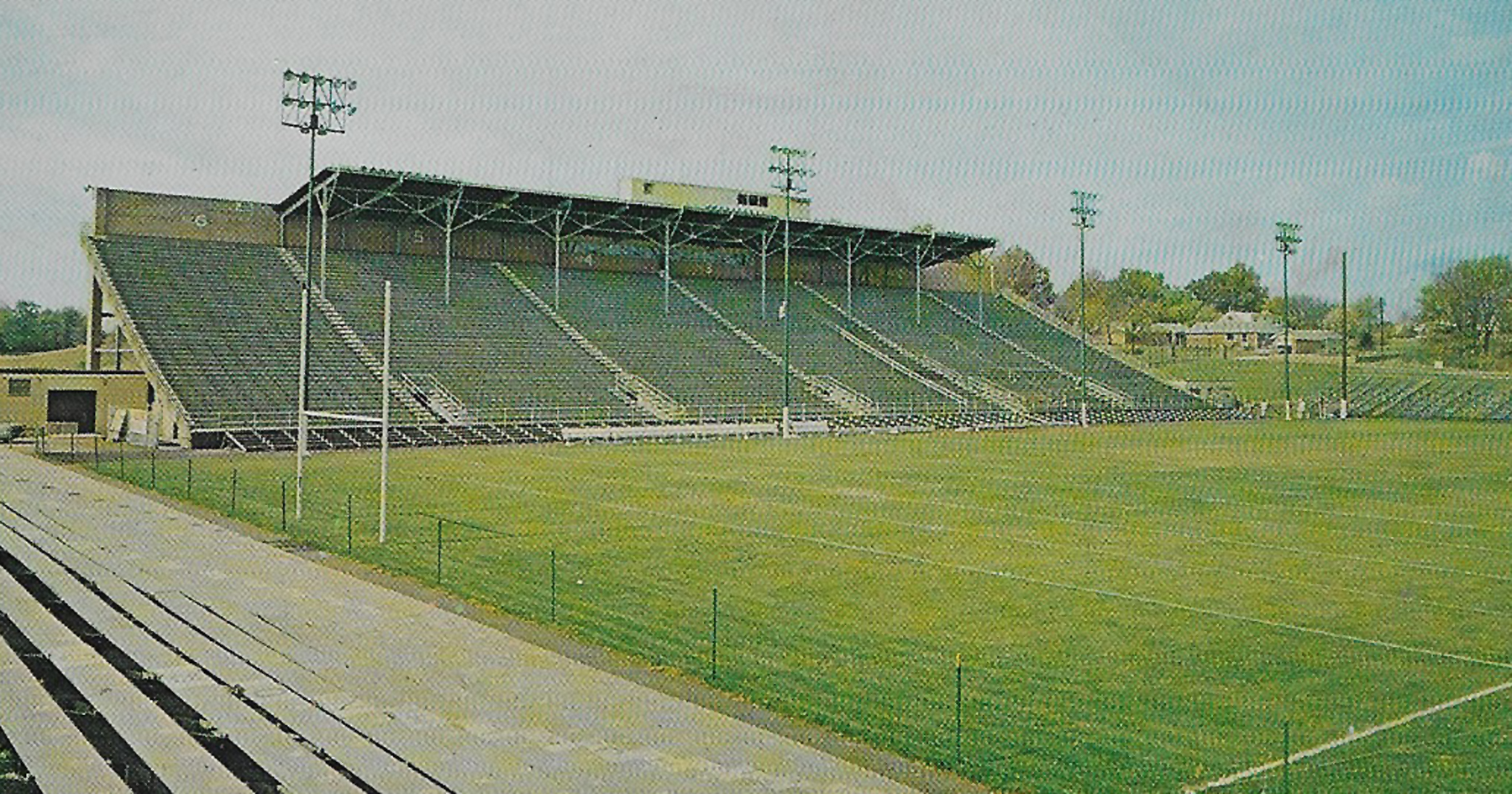
Tiger Stadium with a grass playing surface and larger capacity end zone seats (circa 1970s)

Current Paul Brown Tiger Stadium

